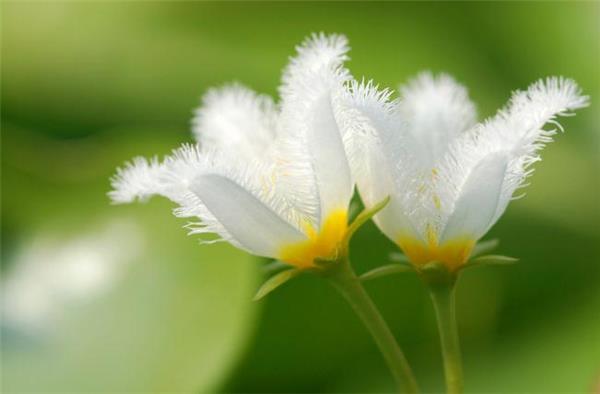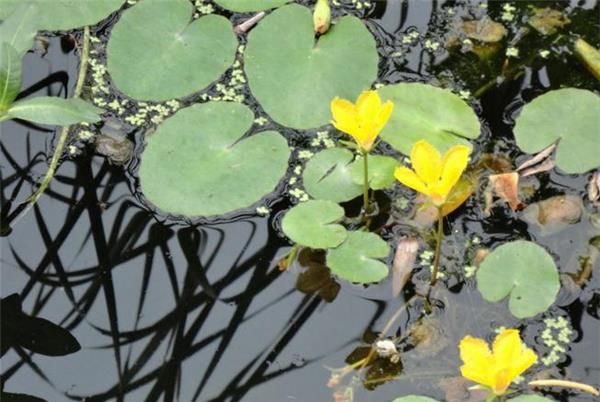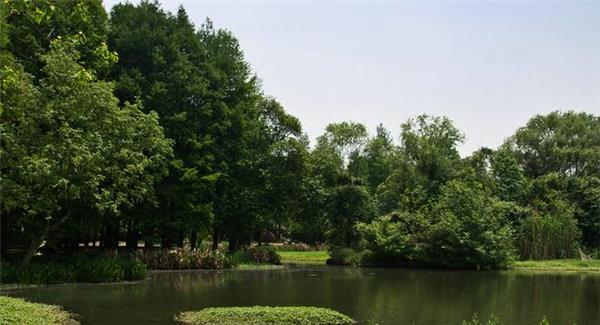An inventory of aquatic plant species
Plants can be divided into many kinds, one of which is aquatic plants. So, how much do you know about aquatic plants? What are the species of aquatic plants? Next, let's take a look at it.

Morphological characteristics of aquatic plants
The intercellular space of aquatic plants is particularly well developed, and special aerated tissues are often developed to ensure adequate oxygen in the underwater part of the plant. The ventilatory tissues of aquatic plants can be divided into two types: open and closed. The aerated tissue of lotus and other plants is open. After entering from the stomata of leaves, air can pass through the ventilated tissues of stems and leaves, thus entering the air chambers of underground stems and roots. The whole ventilatory tissue communicates directly with the outside air through stomata. The ventilatory tissue of plants such as goldfish algae is closed, it does not communicate with the outside atmosphere, and only stores oxygen produced by photosynthesis for respiration, and carbon dioxide produced by respiration for photosynthesis.

Species of aquatic plants
I. Water-holding plants
There are generally four kinds of aquatic plants, one of which is water-bearing plants. The water-standing aquatic plants are tall and colorful, and most of them are divided into stems and leaves, erect and erect, the lower part or base sinks in the water, the roots or stems grow in the mud, and the upper plants stand out of the water. There are many kinds of water-standing plants, such as lotus, calamus, spring onion, Zili flower, barracuda grass, flower Reed, cattail, alisma alisma, parasol, Reed, Zizania caduciflora and so on.
Floating-leaf plants
Floating-leaf plants are also one of the species of aquatic plants, floating-leaf aquatic plants have well-developed rhizomes, large flowers, colorful flowers, no obvious aboveground stems or stems can not stand upright, leaves floating on the surface of the water. Common species are king lotus, water lily, Pingpeng grass, Euryale seed, herb and so on.
Floating plants, such as Euphorbia angustifolia or hyacinth, can also absorb nutrients dissolved in water through slender roots. Deep-water plants such as Euphorbia and Nymphaea, which have roots at the bottom of the pond and flowers and leaves floating on the surface, provide shade for pond creatures and limit the growth of algae.
III. Submerged plants
The species of submerged aquatic plants can be regarded as terrestrial plants in the water. The roots of submerged aquatic plants grow in the mud, and the whole plant sinks into the water with well-developed aerated tissue, which is conducive to gas exchange. Most of the leaves are long and narrow or filamentous, which can absorb some nutrients in the water and can grow and develop normally under the condition of weak light under water.
There are certain requirements for water quality, because the turbidity of water quality will affect its photosynthesis. The flowers are small, the florescence is short, and the leaves are mainly ornamental. Submerged plants, such as Chondrosia, act as "oxygen-making machines" in the water, providing dissolved oxygen necessary for other organisms in the pond to grow. At the same time, they can also remove excess nutrients from the water, thus keeping the water clear by controlling the growth of algae.

IV. Floating plants
There are few species of floating aquatic plants, the roots of these plants do not grow in the mud, the plants float on the water surface, drifting with the current, wind and waves everywhere, most of them are mainly foliage, providing decoration and shade for the pond water. And because they can absorb minerals in the water. at the same time, it can block the sunlight shining into the water, so it can also inhibit the growth of algae in the water. It can provide the covering decoration of the water surface more quickly.
However, some varieties grow and multiply very rapidly and may become a pest in the water, such as water hyacinth. So you need to net some of them out regularly. Otherwise they will cover the whole surface of the water. In addition, do not introduce such plants into larger ponds, as it will be very difficult to remove such plants from large ponds.

This is the end of the introduction of aquatic plant species. I believe that after reading it, we will have a certain understanding of aquatic plants. I hope the relevant knowledge points introduced today can be helpful to everyone.
Related
- Wuhan Hospital Iron Tree Blooming Result Was Instantly Frightened by the Gardener Master
- Which variety of camellia is the most fragrant and best? Which one do you like best?
- What is the small blue coat, the breeding methods and matters needing attention of the succulent plant
- Dormancy time and maintenance management of succulent plants during dormancy
- Minas succulent how to raise, Minas succulent plant pictures
- What are the varieties of winter succulent plants
- How to raise succulent plants in twelve rolls? let's take a look at some experience of breeding twelve rolls.
- Attention should be paid to water control for succulent plants during dormant period (winter and summer)
- Watering experience of twelve rolls of succulent plants
- Techniques for fertilizing succulent plants. An article will let you know how to fertilize succulent plants.



